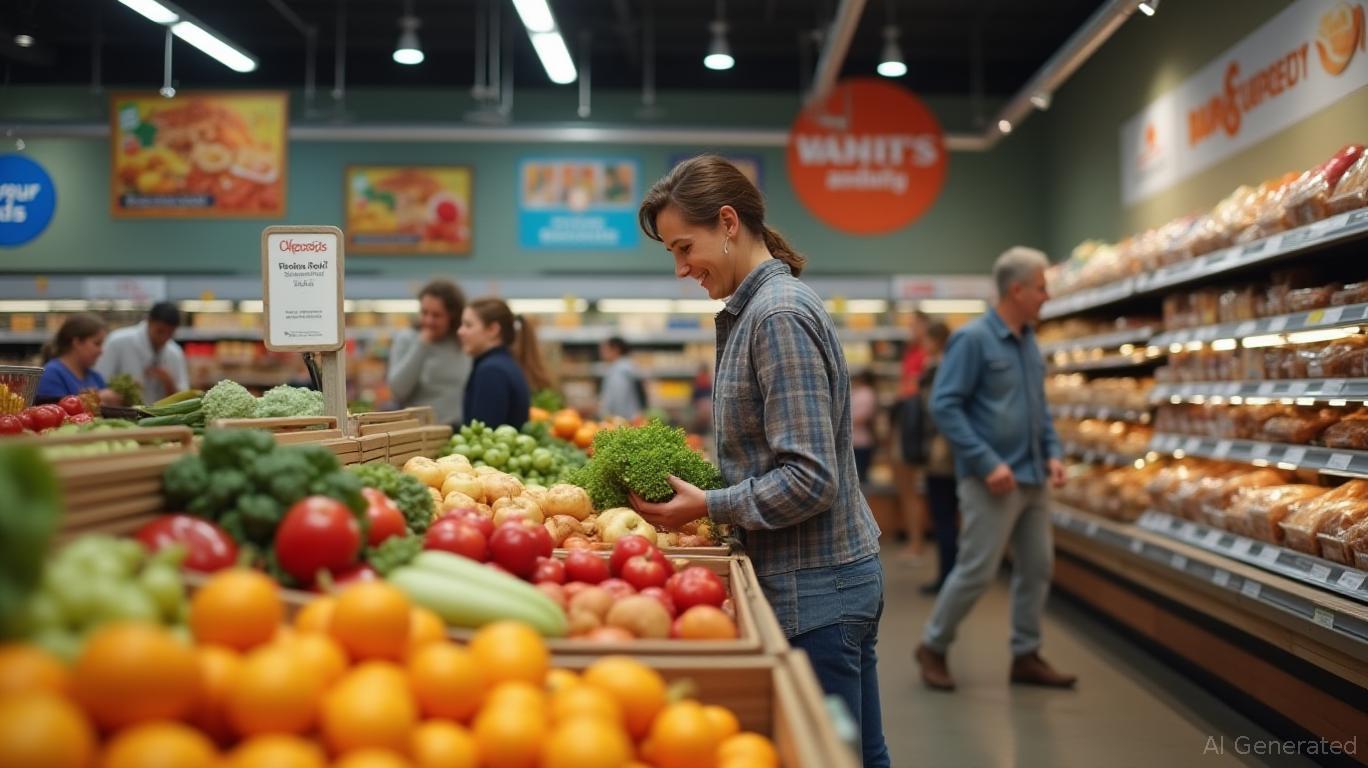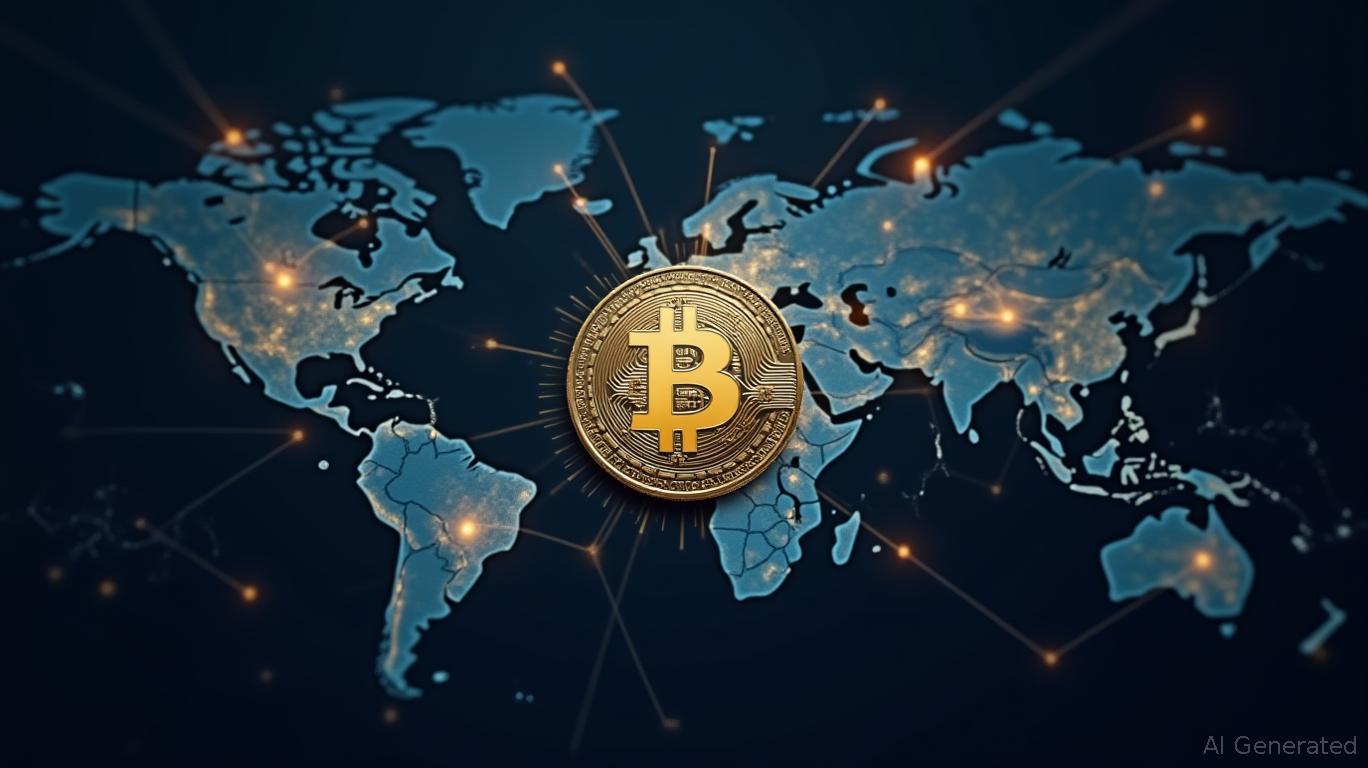Stable in the Storm: Kroger and Circle Navigate Volatility with Defensive Strength and Regulatory Momentum
In a world where geopolitical tensions, inflation, and market swings dominate headlines, investors are increasingly drawn to companies that offer both stability and growth potential. Two such companies—Kroger (KR) and Circle Internet Group (CIRCLE)—are emerging as standout plays in volatile markets, each leveraging distinct advantages.
, a retail stalwart, is capitalizing on its defensive characteristics and disciplined capital allocation, while Circle is riding regulatory tailwinds that position its USD Coin (USDC) as a cornerstone of the digital financial system. Together, they exemplify how old-economy reliability and new-economy innovation can thrive in turbulent times.Kroger: The Retail Anchor in a Shifting Landscape
Kroger has long been a bellwether of American consumer behavior, and its latest results underscore its resilience. Despite a 0.4% dip in total sales to $45.1 billion in Q1 2025, the company's identical sales excluding fuel rose 3.2%, driven by strength in pharmacy, e-commerce, and fresh groceries. This bifurcation reflects Kroger's strategic focus on high-margin categories, which are less sensitive to inflationary pressures.

The shift to e-commerce is a key driver, with sales up 15% year-over-year. Kroger's investments in its digital platforms, including partnerships with Instacart and its own pickup/delivery infrastructure, have solidified its position as a leader in omnichannel retail. Crucially, Kroger's dividend policy—now at $0.32 per share, up from $0.29 a year ago—signals confidence in its cash flow. With a $7.5 billion share repurchase program underway, Kroger is returning capital to shareholders even as it invests $3.6–3.8 billion in 2025 to modernize stores and technology.
Risks remain, including planned store closures and labor disputes in Colorado. Yet Kroger's adjusted free cash flow guidance of $2.8–3.0 billion for 2025 suggests it can navigate these hurdles. The company's conservative debt metrics—a net debt/EBITDA ratio of 1.69, well below its 2.3–2.5 target—further bolster its financial flexibility.
Circle Internet Group: Regulatory Tailwinds Fueling Digital Finance
While Kroger is anchored in physical retail, Circle is betting on the future of digital money. The company's USDC stablecoin, which maintains a 1:1 peg to the dollar, has become a linchpin of the crypto ecosystem. In 2025, regulatory clarity has transformed what was once a speculative asset into a mainstream financial tool.
The EU's Markets in Crypto-Assets (MiCA) regulation, implemented in 2024, granted Circle an Electronic Money Institution (EMI) license, enabling it to issue USDC and EURC across the bloc. This “passport” access to 450 million consumers has propelled EURC to become the largest euro-backed stablecoin, with $20 billion in circulation. Domestically, the U.S. GENIUS Act, passed in 2025, established federal oversight for stablecoins, resolving years of regulatory uncertainty.

The impact is stark: Circle's stock surged over 500% since its June 2025 IPO, fueled by institutional demand for USDC's transparency. Deloitte's daily audits of USDC's reserves—100% backed by cash and Treasuries—and its SEC-registered reserve fund (USDXX) have won over skeptics.
With the Circle Payments Network (CPN) targeting cross-border remittances—a $800 billion market—Circle is positioning itself as a bridge between traditional finance and blockchain. Its recent move to Abu Dhabi and its New York headquarters symbolize its global ambition. Analysts project $3.5 billion in 2025 revenue, with USDC's total value potentially hitting $2 trillion by 2030.
Why These Stocks Excel in Volatile Markets
Kroger and Circle represent two pillars of modern investing: defensive income and disruptive innovation.
- Kroger's dividend yield (currently ~1.5%) and consistent free cash flow provide ballast in a market prone to swings. Its focus on essentials and e-commerce shields it from discretionary spending cuts.
- Circle's regulatory wins eliminate existential risks for USDC, transforming it from a speculative bet into a regulated instrument. As central banks worldwide adopt digital currencies, USDC's first-mover advantage could amplify its dominance.
Investment thesis:
- Kroger is a buy for investors seeking stability. Hold through dips, but monitor debt levels and labor disputes.
- Circle is a growth play with a critical edge: regulatory certainty. Its valuation (P/S of ~5x) may seem high, but its moat in stablecoin infrastructure could justify further upside.
Risks to Consider
No investment is without risks. Kroger faces headwinds from store closures and consumer spending shifts, while Circle's success hinges on global regulatory cohesion—a fragile prospect in an era of competing digital currency frameworks.
Conclusion: Anchors Aweigh
In volatile markets, investors crave companies that blend durability with opportunity. Kroger's defensive moat and Circle's regulatory tailwinds make them compelling picks for a portfolio needing both safety and asymmetric upside. As the world navigates economic uncertainty, these two firms—grounded in groceries and blockchain—are proving that resilience and innovation can coexist.
Invest wisely, and let the storm pass over.

Comments
No comments yet